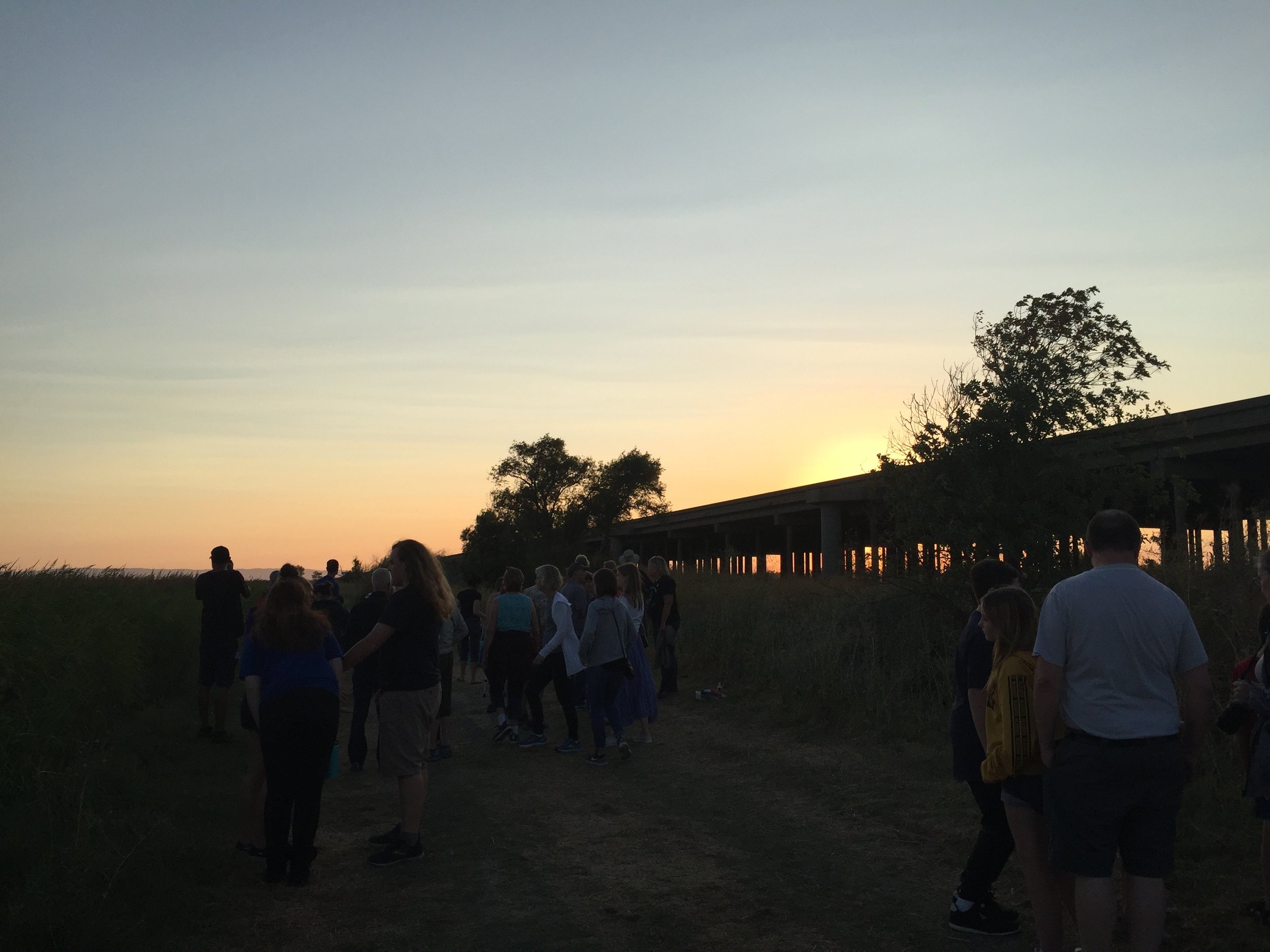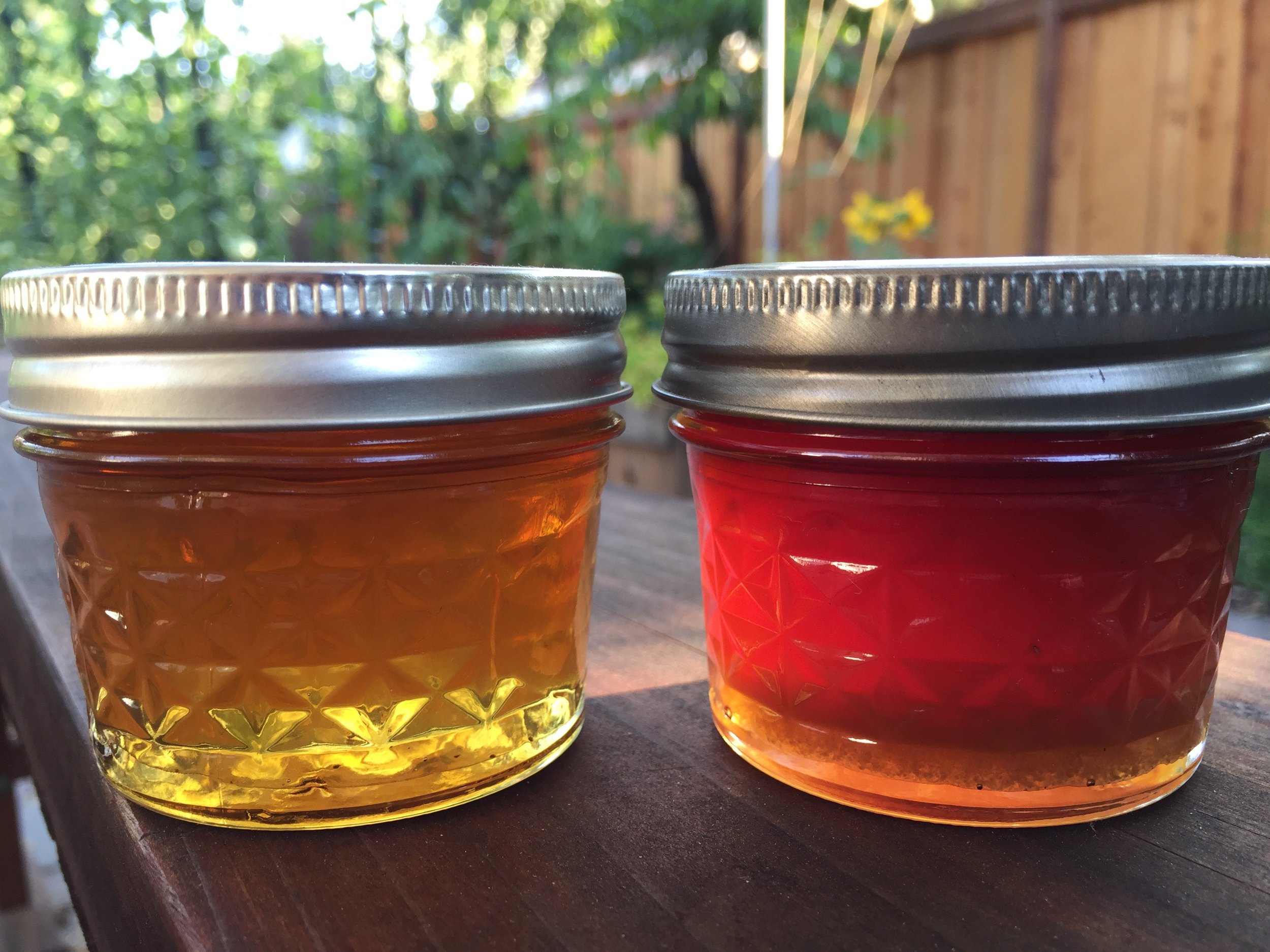As much as I'd like to think I'm a 50-year old with the reflexes of a ninja, it's not me I'm talking about. It's this praying mantis. I've noticed a real explosion of mantids in my garden this August, and I've been enjoying watching them work. They are such a highly specialized insect. Many folks consider them beneficial, and I do too; they eat things like grasshoppers and crickets that can destroy your garden. However, they do not discriminate. They will eat any insect that comes near them, and this morning I watched one catch a honeybee in a very clever manner.
It waited patiently in the plum tree, hanging just above a sunflower, looking for all the world like a leaf. It noticed that bees were coming to the sunflower. So it waited. And waited. And waited.
Every so often she would do a little sideways rock. But mostly she stayed very still.
And then bam! Leap! Pounce! Forelegs sinking into the bee and holding it in such a way that it could not sting her.
First she ate a leg, and then she munched on a wing. Or maybe she just removed them and then moved to the meat of the bee. Mantids eat their prey alive. They do not sting it or poison it, just hold it skewered in their barbed forelegs and start to eat.
Mantids have two compound eyes and three simple eyes between those. In the compound eyes, there is a concentrated area called a 'fovea' that allows them to focus and track. Apparently they can jump with extreme precision and even change direction or twist their bodies mid-air. They seem to attack anything that flies, and there are some mantids that eat hummingbirds or other small birds!
I came in to start this blog; fifteen minutes later I went out to see how the lunch was going, and the mantis was done! Licking her chops!
You can't even tell from her body that she ate a bee. She is still in the same place, so I'm assuming she's going to do some more hunting, although I don't think they need to eat all that often. This plum tree is in the middle of a pollinator garden and is full of flowers - mostly cosmos, at the moment, some verbascum, some tithonia that haven't yet bloomed, and the fading sunflowers. It's a good place to hunt, if you're a mantis.
In a month or so, I will check this area for egg sacs, which the mantis encases with a sort of brown hard material. I imagine they will be hard to see and perfectly adapted to the surroundings.
Are you seeing a lot of mantids in your garden this August?






















